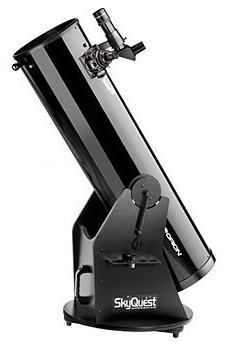
Astronomy Major and Minor
The astronomy major was approved in 2012. It is a 49-credit major in Astronomy, leading to the Bachelor of Arts (BA) degree. Astronomy is a field that captures the popular imagination. Many of us are eager to explore the science of stars, galaxies, and the solar system, and to extend our understanding of the physical nature of the universe. The study of astronomy engages this natural curiosity about the cosmos while strengthening the student’s scientific and technological literacy; it is ideally suited to a science-based liberal arts degree. The Astronomy major offers a liberal arts education that is strong in the sciences yet provides students with ample opportunity to study one or more other academic areas. Students may choose to declare a second major or to minor in a field that supports their career goals.
Course requirements for the major and minor are on the Department website.
Feel free to contact me for more information about the astronomy major and minor.
Courses Taught
PHY205 Exploring the Solar System
Introduction to astronomical objects within the solar system. Motion of the night sky, seasons, moon phases, gravity and orbits, Sun, Earth, Moon, planets. (For topics outisde the solar system such as stars, galaxies, and the universe, see PHY206 Exploring the Universe.) No science preparation required. This course fulfills the General Education Natural Science requirement, Liberal Arts credits, and Systematic Inquiry competency. Example of a recent syllabus and schedule.
PHY206 Exploring the Universe
Introduction to the universe beyond the solar system. Distance to stars, classes of stars, structure of stars, stellar evolution, white dwarfs, neutron stars, black holes, pulsars, quasars, radio astronomy, the Milky Way, galaxies, relativity and cosmology. (For topics within the solar system including the motion of the night sky, see PHY205 Exploring the Solar System.) No science preparation required. This course fulfills the General Education Natural Science requirement, Liberal Arts credits, and Systematic Inquiry competency. Example of a recent syllabus and schedule.
PHY211 General Physics 1 Lab
This lab course is meant to be taken concurrently with PHY201 General Physics 1. Basic principles of mechanics, wave motion, and thermodynamics using vector analysis and calculus. Primarily for students majoring in physics, engineering, mathematics, and natural sciences. Example of a recent syllabus and schedule.
 |
| Dobsonion telescope, used for observational lab course. |
PHY293 Exploring Astronomy Lab
Introduction to the techniques of basic astronomical observations and scientific methodologies. Motion of the sky, moon phases, seasons, telescopes, angular measurement, properties of light. Observations of the night sky using the naked eye, binoculars, and small telescopes. Indoor laboratory activities using optics equipment and computer simulations. No science preparation required. Use of algebra. Example of a recent syllabus and a flyer for this course.
PHY393 Introduction to Astrophysics
Introduction to astrophysics for science and math majors. Formation of stars, structure of stars, stellar evolution, H-R diagram, binaries, white dwarfs, neutron stars, black holes, pulsars, quasars, distance ladder, proper motion, radial motion, blackbody radiation, spectroscopy, galaxies, cosmology. This course is the keystone of the proposed astronomy major, and can be used as an upper-level elective for secondary education physics majors. Example of a recent syllabus and schedule.
PHY344 Extraterrestrial Life
The origin of life on Earth, the possibility of life in the solar system, existence of other planetary systems, and possibilities and techniques for detection of and communication with other intelligences. This course is an elective for the astronomy major and minor. Example of a recent syllabus and schedule.
PHY341 Observational Astronomy
An introduction to the tools and techniques of observational astronomy, including astronomical image analysis, telescopes and CCD detectors, reduction and analysis of astronomical spectra. This course is required for the astronomy major and is an elective for the astronomy minor. Example of a recent syllabus and schedule.